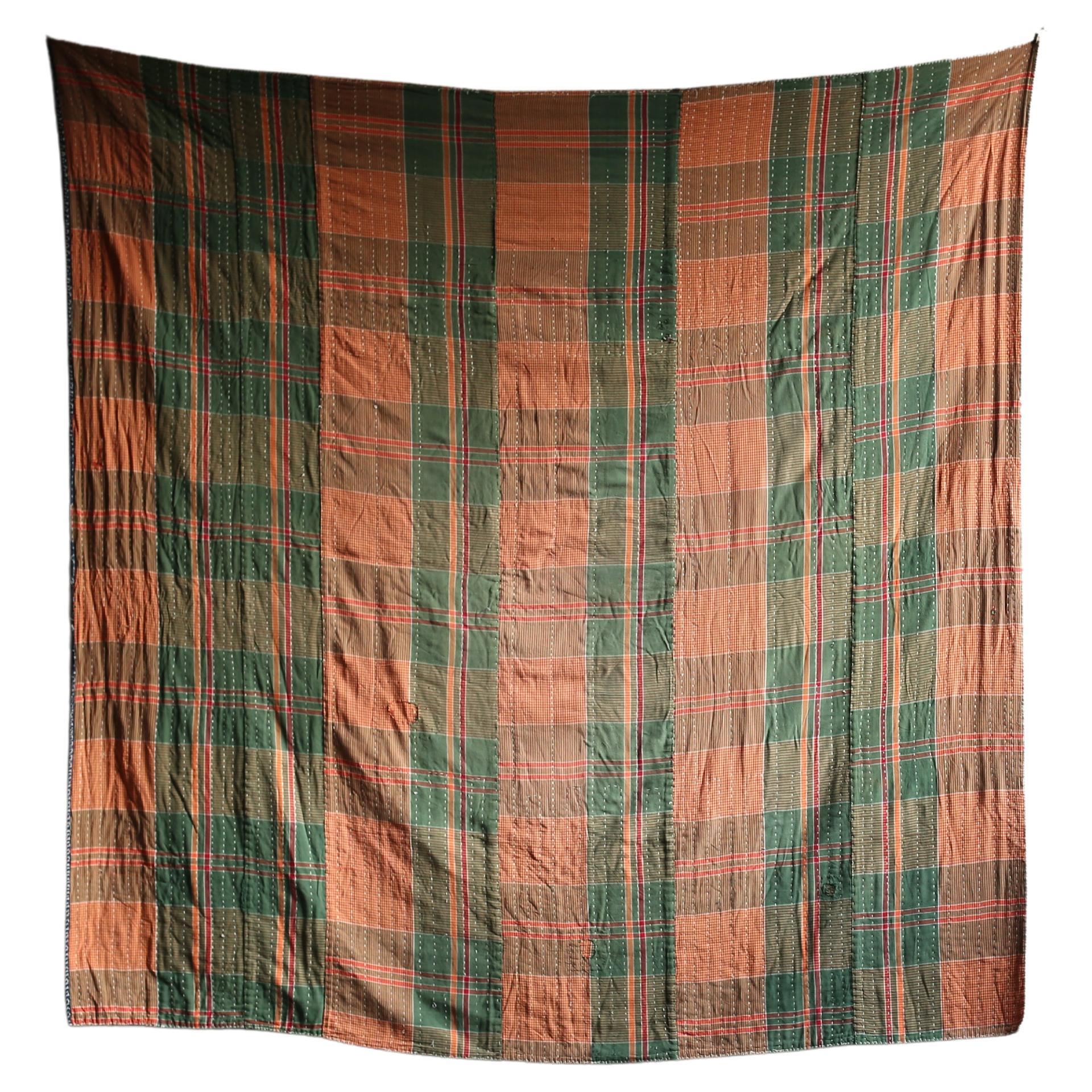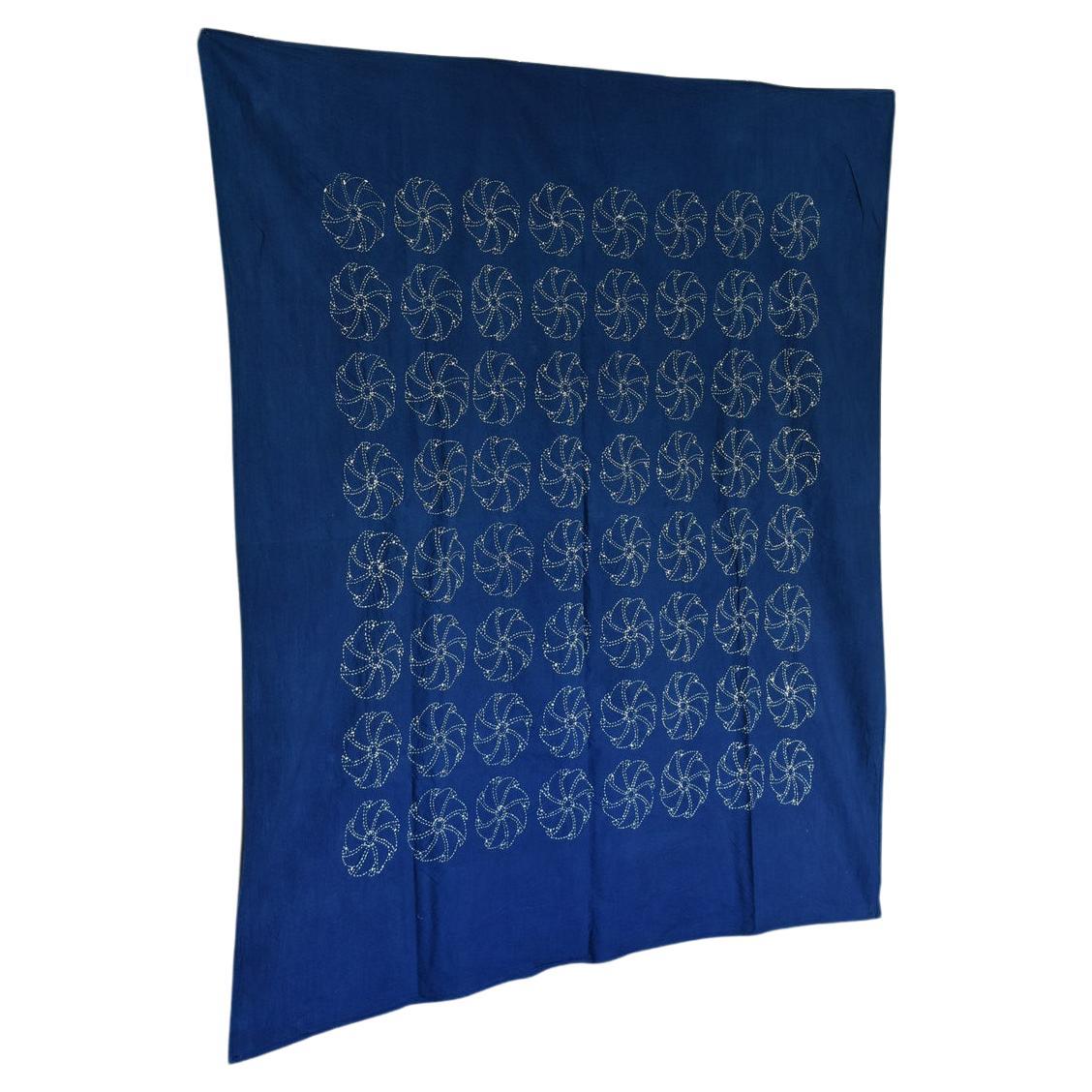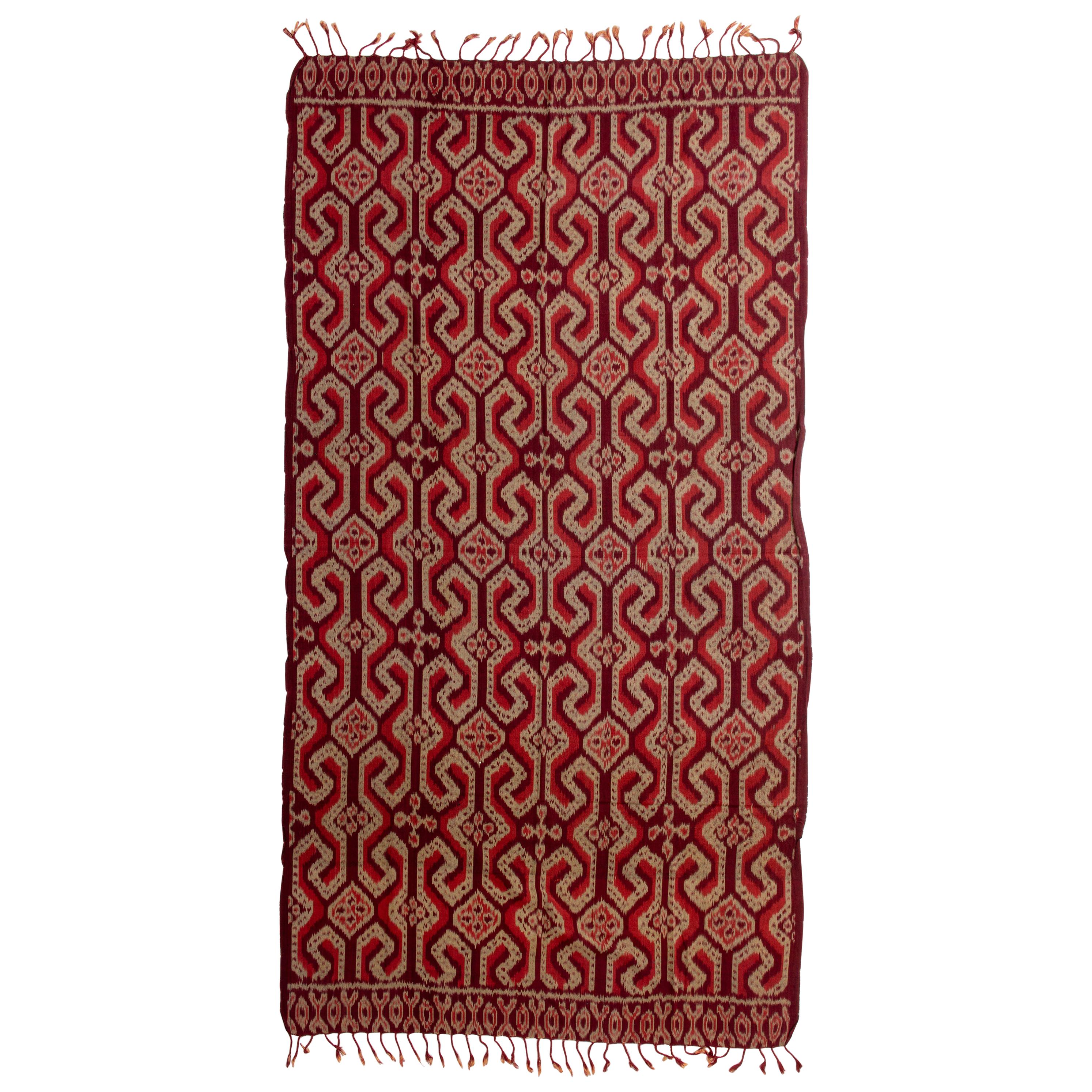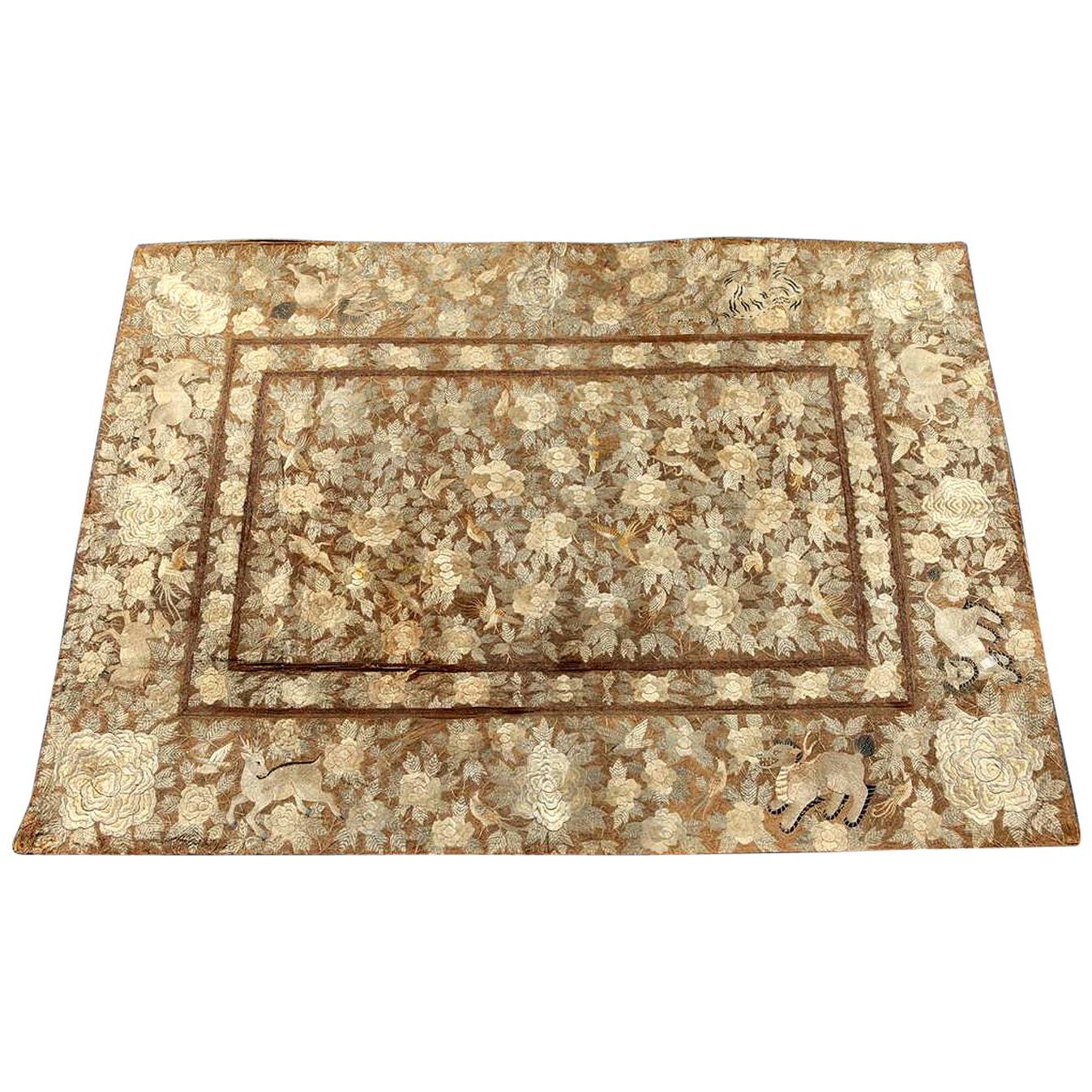Items Similar to "BORO" / Japanese Old Cloth / Tapestry / Wall Decoration
Want more images or videos?
Request additional images or videos from the seller
1 of 13
"BORO" / Japanese Old Cloth / Tapestry / Wall Decoration
About the Item
We have a unique Japanese sense of beauty.
We will also introduce unique items that only we can make, purchasing routes in Japan, experience gained so far, and methods that no one else can imitate.
This is an item from the early Showa period.
Repair any tears or holes with another small piece of cloth.
It has a patchwork-like design, and the pattern is very beautiful.
Abstract and geometric.
This is "Boro", which is made from many layers of indigo-dyed cloth sewn together.
The holes are covered with another piece of fabric. Everything is hand sewn.
The back side is also a patchwork of indigo dyed cloth. Both sides are beautiful and you can choose which side to use depending on your preference.
In modern times, you can enjoy it as a handicraft by pasting it on the wall.
?Note?
Since it is a cloth, the size shown is slightly different.
Think of it as an approximation.
- Dimensions:Height: 74.81 in (190 cm)Width: 76.78 in (195 cm)Depth: 0.2 in (5 mm)
- Style:Showa (Of the Period)
- Materials and Techniques:
- Place of Origin:
- Period:
- Date of Manufacture:1912-1940
- Condition:
- Seller Location:Sammu-shi, JP
- Reference Number:1stDibs: LU5487237633602
About the Seller
5.0
Platinum Seller
These expertly vetted sellers are 1stDibs' most experienced sellers and are rated highest by our customers.
Established in 2015
1stDibs seller since 2020
1,105 sales on 1stDibs
Typical response time: 4 hours
- ShippingRetrieving quote...Ships From: Taito-ku, Japan
- Return PolicyA return for this item may be initiated within 7 days of delivery.
More From This SellerView All
- "BORO" / Japanese Old Cloth / Tapestry / Wall DecorationLocated in Sammu-shi, ChibaWe have a unique Japanese sense of beauty. We will also introduce unique items that only we can make, purchasing routes in Japan, experience gained so far, and methods that no one el...Category
Early 20th Century Japanese Showa Textiles
MaterialsCotton, Linen
- Old Japanese Kimono / 1912-1945 / Wall Hanging Decoration / TapestryLocated in Sammu-shi, ChibaI think this is a kimono woven from the Taisho era to the early Showa era (1912-1945) in Japan. It is a modern design. In the Taisho era, various things were made with reference to...Category
Early 20th Century Japanese Taisho Tapestries
MaterialsCotton
- Japanese Indigo Dyed Old Embroidery Cloth / Japanese Toy Pattern / 1912-1960Located in Sammu-shi, ChibaIt is a Japanese indigo dyed antique cloth. It calls its name "fu-ro-shi-ki". Originally used in the dressing room of the public bath "furo" during the...Category
Early 20th Century Japanese Showa Textiles
MaterialsCotton
- Japanese Antique Rag "BORO" 1800s-1860s / Abstract Art Wabi SabiLocated in Sammu-shi, ChibaThis is a very old Japanese rag. This cloth has been used since the Edo period (1800s-1860s) to carefully and carefully mend bedding. It is a piece that shows the beauty of use very ...Category
Antique Late 19th Century Japanese Edo Textiles
MaterialsLinen
- Japanese Antique Galvanised Iron 1940s-1970s/Wall Decorations Wabi-Sabi ArtLocated in Sammu-shi, ChibaThis is an old Japanese tin object. This item is from the mid-Showa period (1940s-1970s). This tin was manufactured in large quantities during Japan's period of rapid economic growth...Category
Late 20th Century Japanese Showa Decorative Art
MaterialsZinc
- Japanese Antique Door 1860s-1920s / Wall Decoration WabisabiLocated in Sammu-shi, ChibaThis is a very old sliding door made in Japan. It is from the Meiji period (1860s-1920s). It is mainly made of cedar wood and bamboo, and reinforced with tin. This composition is ver...Category
Early 20th Century Japanese Meiji Doors and Gates
MaterialsSteel, Zinc
You May Also Like
- Japanese Indigo Antique Boro Futon Cover or Wall PanelLocated in Alessandria, PiemonteRare perfect antique collection Japanese Indigo Boro Futon cover : also to use. The rare antique boros are now valued as pieces of art, therefore they are...Category
Mid-20th Century Japanese Japonisme Textiles
MaterialsCotton
- Old IKAT TapestryLocated in Alessandria, PiemonteOld beautiful IKAT red and Bordeaux, with a simply geometrical design: perfectly modern taste. Suitable everywhere: over an armchair, at the bottom of the bed, on the wall. On the sh...Category
Mid-20th Century Indonesian Other Tapestries
MaterialsCotton
- Antique Japanese Embroidery TapestryLocated in Atlanta, GAA large Japanese silk embroidery tapestry circa 19th century, late Edo to early Meiji period. Meticulously handwork that densely depicts repea...Category
Antique 19th Century Japanese Japonisme Textiles
MaterialsSilk
- Late 19th Century Wrapping Cloth / Furoshiki, JapanLocated in Point Richmond, CALate 19th century wrapping cloth / furoshiki, Japan Hand-drawn resist-dyed (tsutsugaki) in natural indigo, this large wrapping cloth (furoshiki) disp...Category
Antique Late 19th Century Japanese Meiji Textiles
MaterialsCotton
- Large Japanese Embroidery Tapestry Meiji PeriodLocated in Atlanta, GAA large and finely embroidered Japanese tapestry with brocade border, circa 1900s Meiji period. The tapestry depicts, in a rather realistic style, a forested landscape in autumn flan...Category
Early 20th Century Japanese Japonisme Textiles
MaterialsBrocade, Silk
- Large Framed Japanese Embroidery Dragon TapestryLocated in Atlanta, GAAn impressive Japanese embroidery tapestry circa 1890s Meiji period, presented with brocade border on linen canvas in a Lucite shadow box. The stunning design features three dragons coiling and flying in the clouds. The high relief technique used to render the dragons using mostly the silver threads gives this piece a tremendous sense of motion. The most auspicious mythological creature in Japan and China, dragons were a very popular motif in textile art. In this particular piece, it is the impressive size, the superb craftsmanship, the profuse use of silver threads and near perfect condition that set it apart. Japanese Meiji textiles were widely exhibited in the west during turn of the 20th century at the international exposition. It was used to showcase the Japanese aesthetics with the techniques at their pinnacle. These expositions solidified the country's images overseas and felled the Japanese craze in the west, which turned out to be a long-lasting influence on the western art. Many pieces were purchased and stayed in the west. It is likely this estate piece was from one of the expositions based on its high quality. For two similar dragon tapestries...Category
Antique 1890s Japanese Japonisme Textiles
MaterialsTextile, Lucite
Recently Viewed
View AllMore Ways To Browse
Japanese Indigo Cloth
Embroidered Badge
Min Dynasty
Falcon Scarves
Obi Art
Silk Manila Shawl
Antique Leather Mughal Raj Ottoman Moorish Shoes
1900 Silk Wedding Shawl
Vintage Handmade Gujarati Tribal
Antique Indian Textiles Gujarati
Palampore Textile India
Suzani Decor
Japanese Fukusa
Sumba Tribal Art
Patchwork Robe
Antique Manila Shawl
Ottoman Turkish Shoes
Chinese Embroidery Picture





